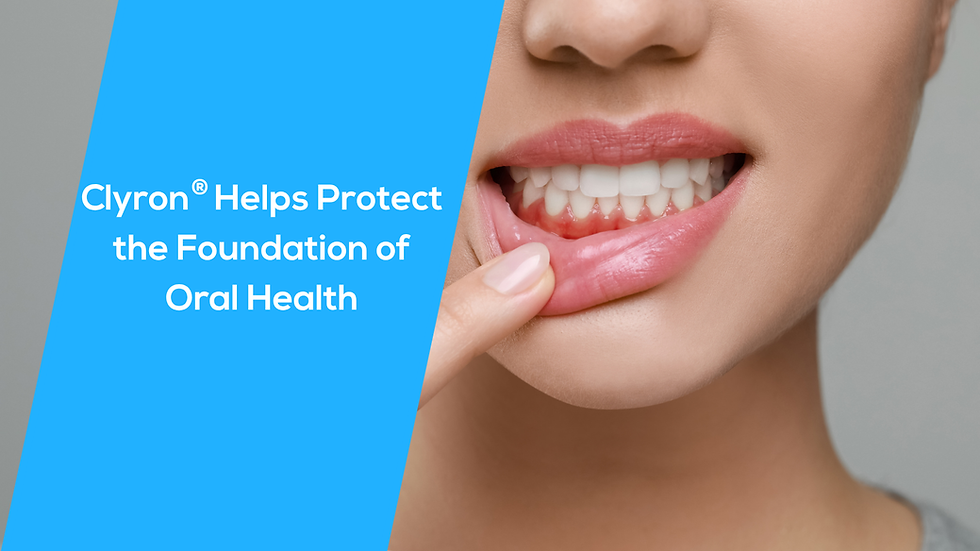The Unseen Struggle: Understanding and Treating Vaginal Tears After Childbirth
- GalenX
- 5 days ago
- 3 min read

Motherhood introduces profound physical changes to a woman's body throughout her life, from first menstruation to menopause. While the journey culminates in the fulfilling responsibility of bearing a child, the transition often involves an unseen and frequently neglected struggle: the physical trauma associated with delivery.
What are Vaginal Tears?
While childbirth is celebrated, the physical reality involves significant strain. One common result is a vaginal tear, also known as a perineal laceration. These tears commonly occur as the baby’s head moves through the vaginal opening. They are typically a consequence of the baby's size exceeding the capacity for the vagina to stretch easily, resulting in tissue trauma (Mayo Clinic).
Vaginal tears are categorized by their severity, reflecting the depth of injury to the surrounding tissue:
First-degree tear: This is the least severe injury, involving only the first layer of skin around the vagina and perineal area. Stitches are usually not required.
Second-degree tear: The most common type, this tear extends deeper through the skin into the underlying muscles of the vagina and perineum. Stitches are necessary for healing.
Third-degree tear: This severe tear extends from the vagina to the anus, involving injury to the skin, perineal muscles, and the anal sphincter muscles (which control bowel function). This type of tear requires complex suturing.
Fourth-degree tear: The least common but most severe injury. It extends from the vagina, through the perineal area and anal sphincter, and into the rectum. Due to the severity, stitches may need to be performed in an operating room rather than the delivery room (Cleveland Clinic).
Treatment and Healing Strategies
Cuts and tears compromise the integrity of the skin barrier, creating entry points for bacteria that can lead to infection. Keeping the wound area clean and dry is essential to prevent skin infections (Huizen, 2025).
General recommendations for treating and managing pain from vaginal cuts and tears include:
Hygiene: Wash hands with soap and running water before touching the wound. Cleanse the affected area daily with warm water and a mild, unscented soap or cleanser.
Drying: Ensure the affected area is completely dry before dressing or changing pads.
Thermal Relief: Apply a covered ice pack to the area to reduce inflammation and ease discomfort. Over-the-counter painkillers may also be used to manage pain.
Avoidance: Steer clear of soaking the affected area (e.g., in a bathtub). Refrain from using any products inside the vagina or harsh, scented products that could disrupt the vagina's naturally acidic pH.
Rest: It is advisable to refrain from sexual activities involving the vagina while the cuts or tears are healing. Wearing loose-fitting underwear made of natural materials like cotton or bamboo may also promote comfort and airflow for a few days (Huizen, 2025).
Hyclens OB Wash

For optimal care, consider Hyclens OB Wash. Containing 1% Chlorhexidine digluconate, Hyclens OB Wash is a specially formulated antiseptic obstetric wash that offers optimum feminine care. Enriched with the benefits of Chlorhexidine and other mild ingredients, its persistent antiseptic action guarantees safety and protection for the mother and the child during pregnancy, labor, birth, and beyond.
Aside from its cleansing benefits, it actively aids in the healing process of cuts or tears following a normal delivery. This wash serves as a crucial vaginal protection against infection of the repaired cut and helps improve the overall wound healing process.
Understanding these common postpartum realities is the first step toward better maternal care and recovery. Never hesitate to discuss any discomfort or concern with your healthcare provider. Prioritize your healing, embrace self-care, and know that your strength through this journey is truly remarkable.
References
Cleveland Clinic. (2025, June 3). Vaginal tears during childbirth. Retrieved from https://my.clevelandclinic.org/health/diseases/21212-vaginal-tears-during-childbirth
Huizen, J. (2025, April 30). Causes and treatment of vaginal cuts and tears. Medical News Today. Retrieved from https://www.medicalnewstoday.com/articles/325100#treatment
Mayo Clinic. (n.d.). Vaginal tears in childbirth. Retrieved from https://www.mayoclinic.org/healthy-lifestyle/labor-and-delivery/in-depth/vaginal-tears/art-20546855




Comments